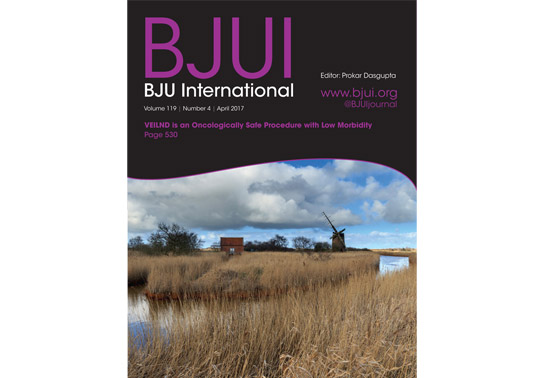
Editorial: Is minimally invasive inguinal node dissection the way forward?
In this issue of BJUI, Kumar and Sethia report their experience of laparoscopic inguinal node dissection for patients with penile cancer [1]. The authors should be congratulated for what is a technically and feasibly difficult study to complete.
The step-wise spread of penile carcinoma first to the inguinal lymph nodes is well known. It is also recognized that accurate staging and treatment of inguinal metastases play a crucial part in a patient's management pathway. Furthermore, evidence…
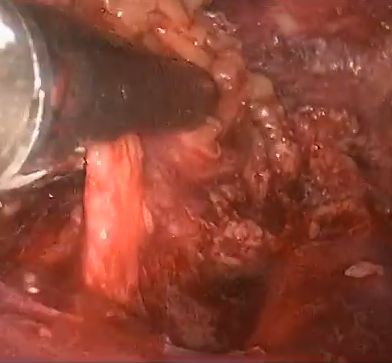
Video: Comparing VEILND with OILND for Penile Cancer
Prospective study comparing video-endoscopic radical inguinal lymph node dissection (VEILND) with open radical ILND (OILND) for penile cancer over an 8-year period
Abstract
Objective
To compare the complications and oncological outcomes between video-endoscopic inguinal lymph node dissection (VEILND) and open ILND (OILND) in men with carcinoma of the penis.
Patients and methods
A prospectively collected institutional database was used to determine the outcomes in…
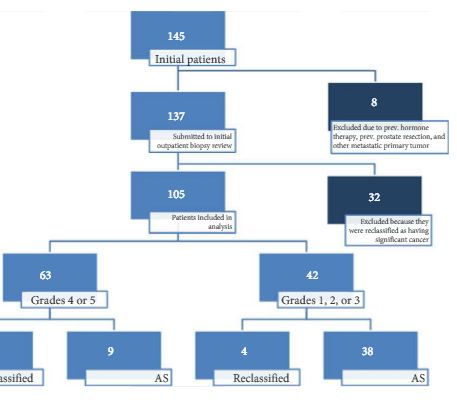
Article of the Week: 3-Tesla mpMRI and TRUS-Bx in PCa patients on AS
Every week the Editor-in-Chief selects an Article of the Week from the current issue of BJUI. The abstract is reproduced below and you can click on the button to read the full article, which is freely available to all readers for at least 30 days from the time of this post.
In addition to the article itself, there is an accompanying editorial written by a prominent member of the urological community. This blog is intended to provoke comment and discussion and we invite you to use the comment…

Editorial: An end to the phenomenon of ‘upgrading’ in early prostate cancer?
The phenomenon of ‘upgrading’ in early prostate cancer is one of those unusual events that is both useful to us on the one hand and undesirable on the other; useful because the phenomenon gifts us a direct measure of the precision of our risk stratification methods for men recently diagnosed, and undesirable because the perfect pathway should, ideally, be free of any upgrading.
Upgrading occurs in a number of settings. We see it at play to some degree when an unreliable test is re-applied…
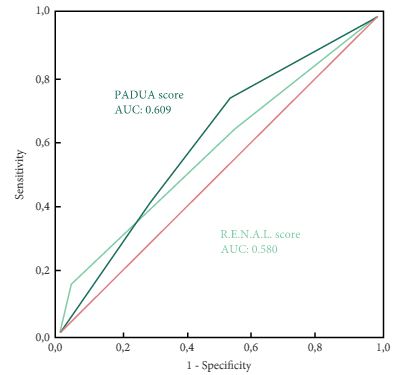
Article of the Week: PADUA and R.E.N.A.L. nephrometry scores correlate with perioperative outcomes of RAPN: analysis of the Vattikuti GQI-RUS database
Every week the Editor-in-Chief selects an Article of the Week from the current issue of BJUI. The abstract is reproduced below and you can click on the button to read the full article, which is freely available to all readers for at least 30 days from the time of this post.
In addition to the article itself, there is an accompanying editorial written by a prominent member of the urological community. This blog is intended to provoke comment and discussion and we invite you to use the comment…

Editorial: Nephrometry scoring systems: valuable research tools, but can they be applied in daily clinical practice?
In this issue of BJUI Schiavina et al. [1] report on the RENAL and PADUA nephrometry scoring systems in predicting peri-operative outcomes, including warm ischaemia time and postoperative complications, in a multi-institutional cohort of patients undergoing robot-assisted partial nephrectomy. The authors showed that tumours classified as being of intermediate and high complexity on the PADUA score and high complexity on the RENAL score were associated with a nearly threefold higher risk of longer…
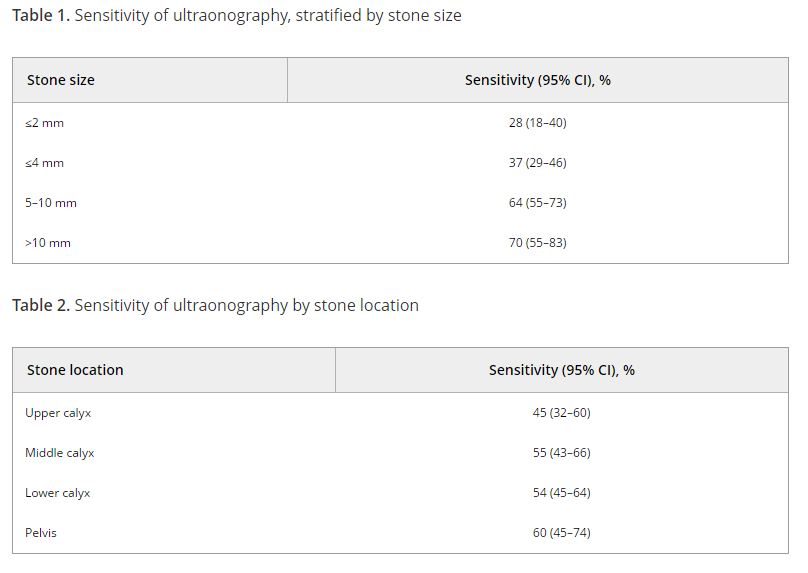
Article of the Week: Accuracy of ultrasonography for renal stone detection and size determination: is it good enough for management decisions?
Every week the Editor-in-Chief selects an Article of the Week from the current issue of BJUI. The abstract is reproduced below and you can click on the button to read the full article, which is freely available to all readers for at least 30 days from the time of this post.
In addition to the article itself, there is an accompanying editorial written by a prominent member of the urological community. This blog is intended to provoke comment and discussion and we invite you to use the comment…

Editorial: Ultrasonography vs computed tomography for stone size
In this edition of the BJUI Ganesan et al. [1] report a retrospective analysis of 552 ultrasonography (US) examinations that were followed by a non-contrast CT within 60 days in 486 patients collected over an 18-year period (1995–2012). The sensitivity of US for stone detection was 54% and its specificity was 91% when compared to CT, and sensitivity was positively associated with stone size (increasing from 73% for stones of 0–4 mm to 77% for 5–10 mm, and 89% for >10 mm; P <…

Video: Accuracy of ultrasonography for renal stone detection and size determination: is it good enough for management decisions?
Accuracy of ultrasonography for renal stone detection and size determination: is it good enough for management decisions?
Abstract
Objectives
To determine the sensitivity and specificity of ultrasonography (US) for detecting renal calculi and to assess the accuracy of US for determining the size of calculi and how this can affect counselling decisions.
Materials and Methods
We retrospectively identified all patients at our institution with a diagnosis…

Article of the Week: LCA – EuRECA study
Every week the Editor-in-Chief selects an Article of the Week from the current issue of BJUI. The abstract is reproduced below and you can click on the button to read the full article, which is freely available to all readers for at least 30 days from the time of this post.
In addition to the article itself, there is an accompanying editorial written by a prominent member of the urological community. This blog is intended to provoke comment and discussion and we invite you to use the comment…
